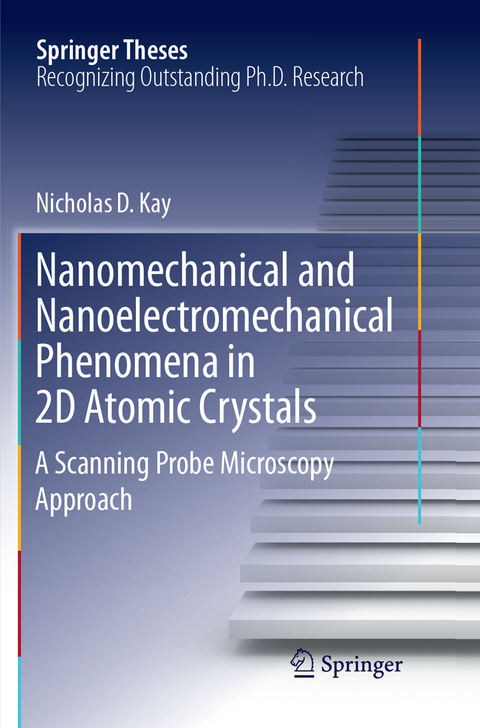
Nanomechanical and Nanoelectromechanical Phenomena in 2D Atomic Crystals
Springer International Publishing (Verlag)
978-3-319-88898-9 (ISBN)
This thesis introduces a unique approach of applying atomic force microscopy to study the nanoelectromechanical properties of 2D materials, providing high-resolution computer-generated imagery (CGI) and diagrams to aid readers' understanding and visualization. The isolation of graphene and, shortly after, a host of other 2D materials has attracted a great deal of interest in the scientific community for both their range of extremely desirable and their record-breaking properties. Amongst these properties are some of the highest elastic moduli and tensile strengths ever observed in nature. The work, which was undertaken at Lancaster University's Physics department in conjunction with the University of Manchester and the National Physical Laboratory, offers a new approach to understanding the nanomechanical and nanoelectromechanical properties of 2D materials by utilising the nanoscale and nanosecond resolution of ultrasonic force and heterodyne force microscopy (UFM and HFM) - both contact mode atomic force microscopy (AFM) techniques. Using this approach and developing several other new techniques the authors succeeded in probing samples' subsurface and mechanical properties, which would otherwise remain hidden. Lastly, by using a new technique, coined electrostatic heterodyne force microscopy (E-HFM), the authors were able to observe nanoscale electromechanical vibrations with a nanometre and nanosecond resolution, in addition to probing the local electrostatic environment of devices fabricated from 2D materials.
Nicholas Kay spent the first part of his academic career at the Physics department at Lancaster University as a joint PhD student there and at the University of Manchester through the graphene centre for doctoral training. Here he was primarily interested with the nanomechanical and nanoelectromechanical properties of 2D materials, applying scanning probe microscopy but also later surface acoustic waves and optical techniques. After finishing at Lancaster University he took a position at the National Physical Laboratory where his research now focusses on optics. He still remains active in atomic force microscopy, 2D materials and nanomechanics and nanoelectromechanics.
Introduction.- Background.- Materials and Methods.- Morphology of 2D Materials and their Heterostructures.- Nanomechanical Phenomena.- Nanoelectromechanical Phenomena.- Further Work and Future Directions.- Conclusion.
| Erscheint lt. Verlag | 4.9.2018 |
|---|---|
| Reihe/Serie | Springer Theses |
| Zusatzinfo | XXI, 122 p. 67 illus., 14 illus. in color. |
| Verlagsort | Cham |
| Sprache | englisch |
| Maße | 155 x 235 mm |
| Gewicht | 231 g |
| Themenwelt | Naturwissenschaften ► Chemie ► Analytische Chemie |
| Naturwissenschaften ► Physik / Astronomie ► Atom- / Kern- / Molekularphysik | |
| Naturwissenschaften ► Physik / Astronomie ► Festkörperphysik | |
| Naturwissenschaften ► Physik / Astronomie ► Theoretische Physik | |
| Technik | |
| Schlagworte | 2D Crystals • 2D Nanoelectromechanical Properties • Atomic force microscopy • Heterodyne Force Microscopy • Nanoelectromechanical Properties of 2D Materials • Nano Electromechanical Resonator • Nano Mechanics • Subsurface Mechanical Properties • Ultrasonic Force Microscopy |
| ISBN-10 | 3-319-88898-6 / 3319888986 |
| ISBN-13 | 978-3-319-88898-9 / 9783319888989 |
| Zustand | Neuware |
| Informationen gemäß Produktsicherheitsverordnung (GPSR) | |
| Haben Sie eine Frage zum Produkt? |
aus dem Bereich


